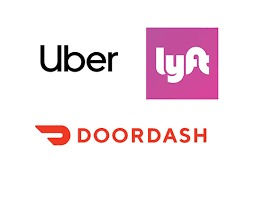GIG Economy
- Bruno Andrade
- Jun 12, 2023
- 2 min read
Gig economy statistics

Show a free market system where organizations and independent workers engage in short-term work arrangements. BLS data suggest that in 2017 the US gig economy had 55 million participants. It's estimated that 36% of US workers take part in the gig economy and 33% of companies extensively use gig workers
The word “gig” refers to the transient nature of the job itself.
Gig Economy Examples
The gig economy definition encompasses all sorts of contingent work arrangements, for example:
Freelancers
Consultants
Independent contractors and professionals
Temps (temporary contract workers)
The gig economy is not a new phenomenon—freelancers have been around for a while. So have consultants, temps, and so on. The reason why the gig economy has been under scrutiny for the past couple of years is that technology has lowered barriers to entry so much that “gigs” have become easily accessible to an unprecedented number of people.
Uber vs DoorDash vs Lyft

QUATERNALY REVENUE

REVENUE GROWTH

Doordash and Uber Eats both benefitted greatly from the Covid lockdowns of 2020 - 2021. However, in 2022, Uber's mobility segment grew rapidly and took market share from Lyft.
MAU

Uber has amassed over 130M monthly active platform customers (MAPC), nearly 6.5x that of Lyft 📶
Note: DoorDash only reports MAUs in their annual report and finished 2022 with 32M users.
GROSS BOOKING

Between Uber's mobility, delivery, and freight segments, they are clearing over $30B in gross bookings every quarter, compared to DoorDash's $15.9B 🤑
Note: Lyft stopped reporting gross booking volume a few years back
TAKE RATE

One large discrepancy between Uber and DoorDash is their overall take rate, which can be calculated by dividing revenue by their gross bookings. looks like the take rates on rides > take rate on delivery
AVERAGE ORDER VALUE

The average order size on DoorDash was $31.10 in Q1'23, compared to Uber's $14.80 💵
TRIPS AND ORDERS

So how many orders are these guys completing per year? 🚗
In the last four quarters, Uber has completed over 8B trips and deliveries. That is over 22M per day, 915K per hour, and 15K per minute.
In the same time period, DoorDash has completed 1.8B deliveries.
OPERATING MARGIN (TTM)







Comments